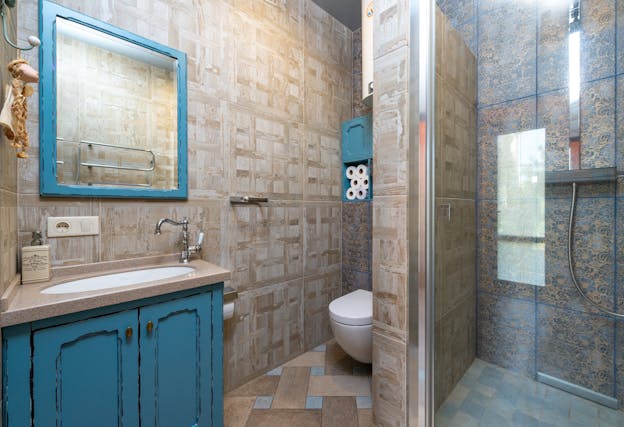Introduction: Acrylic Mirror Backing – The Secret to Durable Mirrors
Acrylic mirror backing is an essential component that ensures the durability and functionality of your acrylic mirrors. Unlike traditional glass mirrors, acrylic mirrors are lightweight, shatter-resistant, and versatile, making them ideal for various applications. However, the quality of the acrylic mirror backing determines how well these mirrors stand up to wear and tear over time.
If you’ve been searching for ways to improve or understand acrylic mirror backing, this guide is here to help. From choosing the right materials to applying the backing effectively, we’ll walk you through everything you need to know. Whether you’re a DIY enthusiast or a professional installer, mastering the art of acrylic mirror backing can make a significant difference in your projects.
Choosing the Best Materials for Acrylic Mirror Backing
The first step in achieving a sturdy and reliable acrylic-mirror backing is selecting the right materials. Not all backings are created equal, and choosing substandard options can lead to issues like warping or delamination. Common materials for acrylic mirror backing include adhesive films, vinyl, and rigid boards. Opting for high-quality materials ensures long-lasting performance and resistance to environmental factors.
Preparing the Surface for Acrylic Mirror Backing
Proper surface preparation is crucial when working with acrylic-mirror backing. A clean, dry, and dust-free surface ensures the backing adheres securely to the acrylic sheet. Using alcohol-based cleaners and microfiber cloths helps remove any contaminants, providing an optimal base for the backing application.
Applying Adhesive Films to Acrylic Mirrors
Adhesive films are a popular choice for acrylic-mirror backing due to their ease of use and versatility. These films not only provide protection but also enhance the mirror’s rigidity. To apply adhesive films effectively, start by measuring and cutting the film to the size of the acrylic sheet. Smooth out air bubbles during application using a squeegee for a flawless finish.
Understanding the Role of Vinyl in Acrylic Mirror Backing
Vinyl is another excellent material for acrylic mirror backing, offering flexibility and durability. It is especially useful for outdoor applications where exposure to moisture and UV rays is a concern. Vinyl backings can be customized to match specific aesthetic or functional requirements, making them a versatile option for various projects.
Ensuring Proper Bonding for Acrylic Mirror Backing
Strong bonding is essential to prevent the backing from peeling or detaching over time. The use of industrial-grade adhesives ensures that the acrylic-mirror backing stays securely attached, even under challenging conditions. Proper bonding techniques involve evenly distributing the adhesive and allowing adequate curing time.
Avoiding Common Mistakes in Acrylic Mirror Backing
Mistakes during the backing process can compromise the performance and lifespan of your acrylic mirrors. Common errors include applying backing on dirty surfaces, using low-quality adhesives, or failing to align the backing material correctly. Avoiding these mistakes ensures a professional finish and long-term durability.
Maintaining Acrylic Mirrors with Proper Backing
Maintenance plays a significant role in extending the life of acrylic mirrors with backing. Regular cleaning with non-abrasive solutions prevents scratches and ensures the backing material remains intact. Avoiding excessive moisture exposure is also critical, especially for backings that are not waterproof.
Customizing Acrylic Mirror Backing for Specific Applications
One of the advantages of acrylic-mirror backing is its adaptability to various applications. From decorative installations to functional setups, backings can be tailored to meet specific needs. For example, reinforced backings are ideal for high-impact areas, while lightweight options are better suited for portable designs.
Benefits of Professional Installation for Acrylic Mirror Backing
While DIY methods can be effective, professional installation ensures precision and reliability. Experts in acrylic mirror backing have the tools and experience needed to deliver flawless results. Investing in professional services can save time and reduce the risk of errors in high-stakes projects.
Conclusion: Acrylic Mirror Backing – Key to Long-Lasting Mirrors
Acrylic-mirror backing is more than just an add-on—it’s a critical component that determines the durability, functionality, and aesthetics of your mirrors. By choosing the right materials, preparing the surface properly, and applying backing with care, you can ensure your acrylic mirrors stand the test of time.
Whether you’re crafting custom designs or working on large-scale projects, understanding the nuances of acrylic mirror backing is essential. Follow the tips and techniques outlined in this guide to achieve professional-quality results. With proper maintenance and thoughtful application, your acrylic mirrors will remain a shining example of durability and elegance.

Share this:
- Click to share on Facebook (Opens in new window) Facebook
- Click to share on X (Opens in new window) X
- Click to share on LinkedIn (Opens in new window) LinkedIn
- Click to share on Reddit (Opens in new window) Reddit
- Click to share on X (Opens in new window) X
- Click to share on Threads (Opens in new window) Threads
- Click to share on WhatsApp (Opens in new window) WhatsApp




